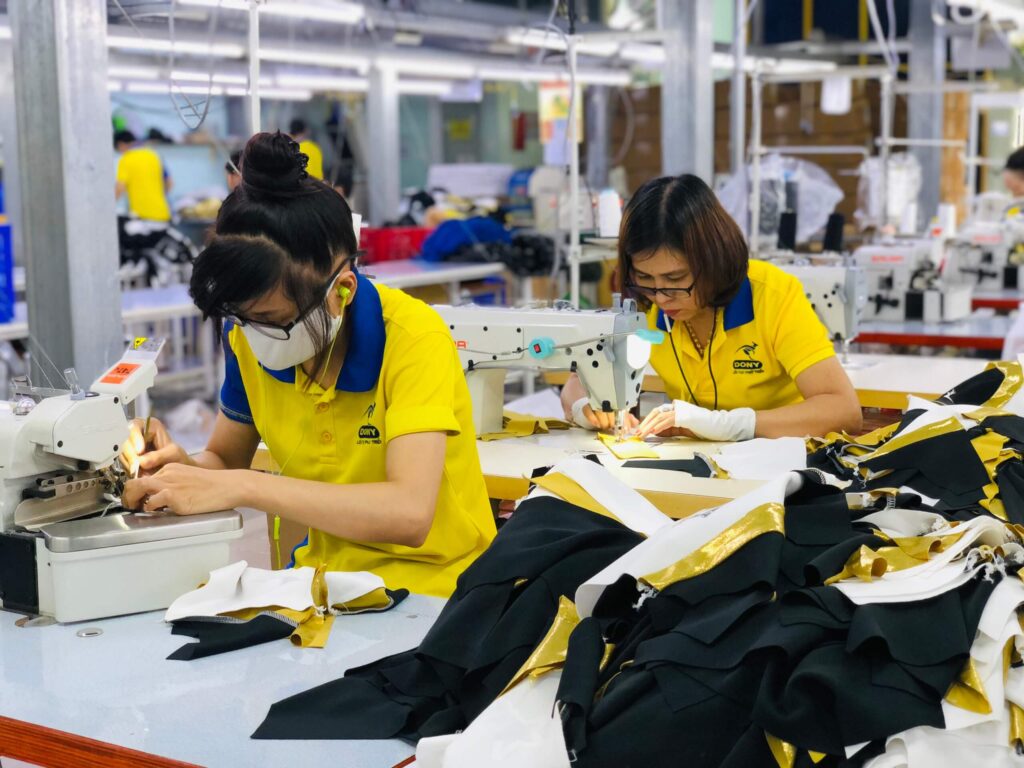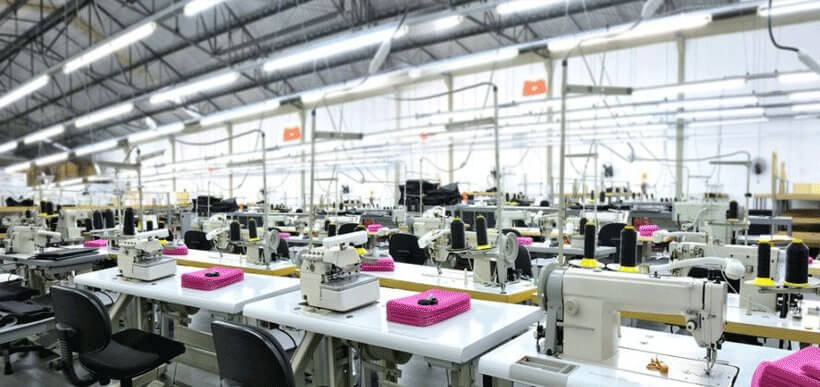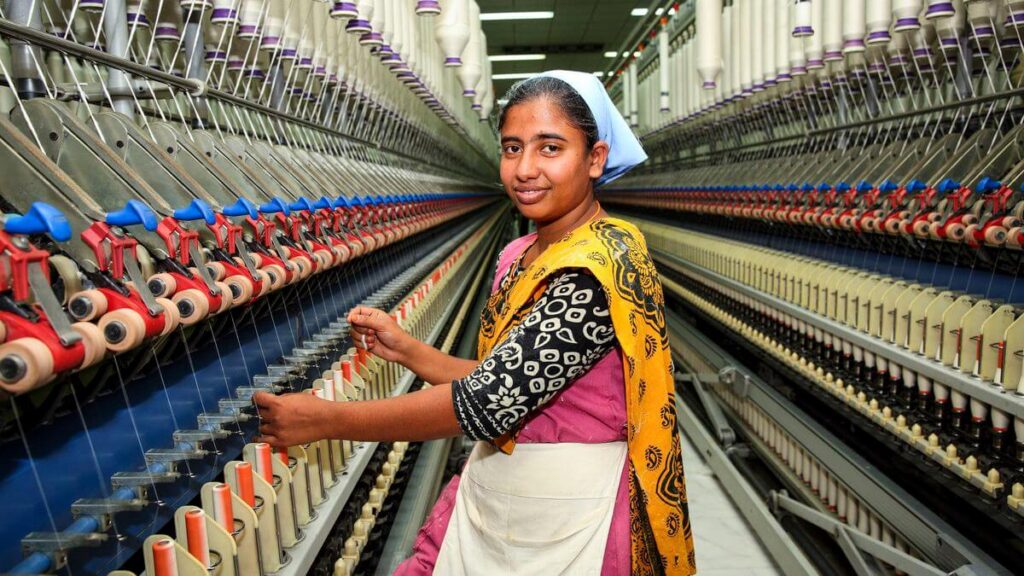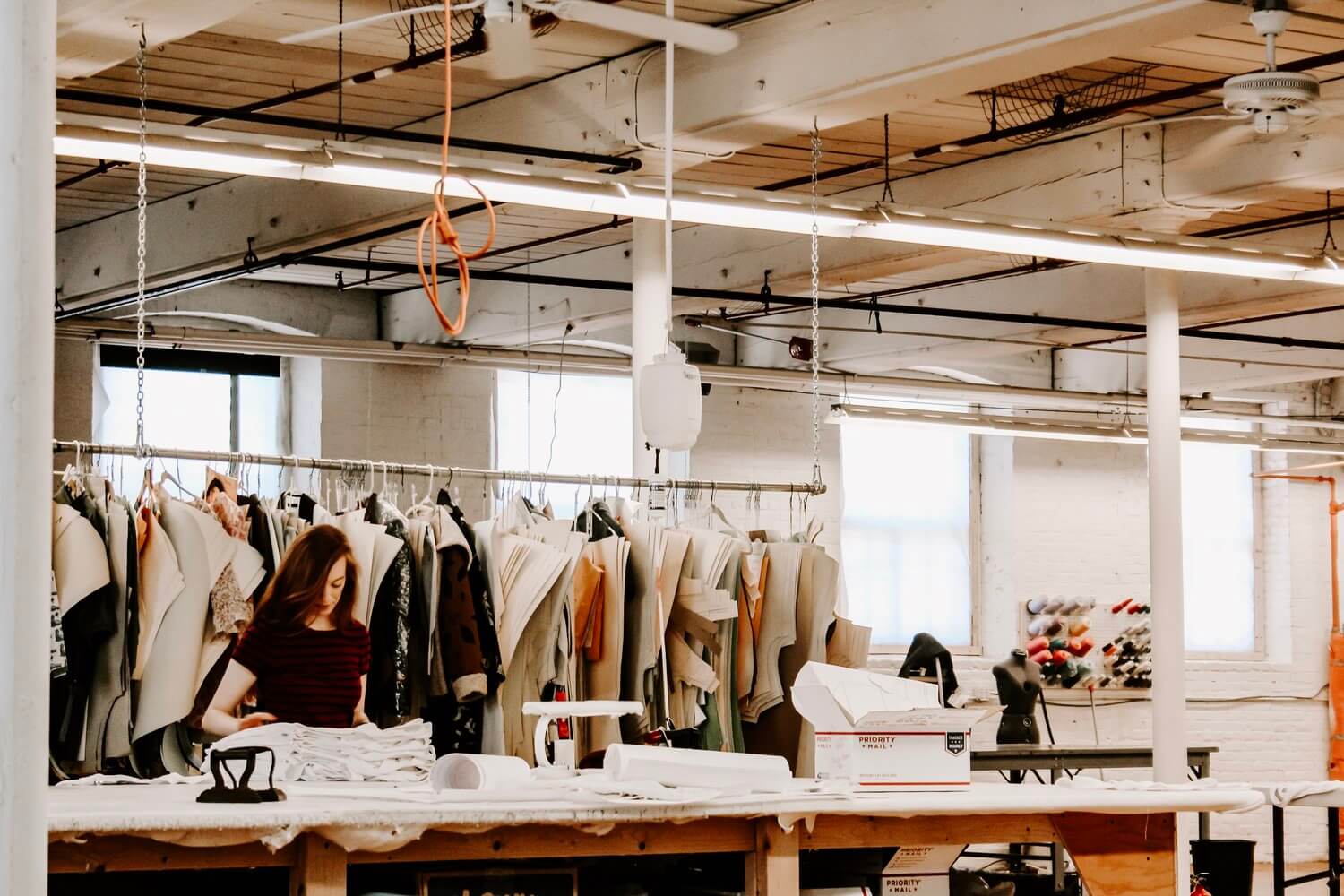What is a Fashion Factory?
A fashion factory is a vital part of the global fashion supply chain, responsible for producing clothing and accessories that range from everyday wear to high-end couture. These factories play a crucial role in transforming raw materials into finished garments, following intricate processes such as cutting, sewing, dyeing, and packaging. With fashion being one of the largest industries in the world, fashion factories are key contributors to the fast-paced, trend-driven nature of this sector.
The scope of fashion factories varies greatly. Some focus on mass production for fast fashion brands, while others specialize in sustainable and ethical manufacturing. Countries like China, India, Bangladesh, and the USA host some of the largest and most influential fashion factories, each contributing uniquely to the industry’s evolution. For instance, China fashion factories are known for their technological advancements, while Bangladesh fashion factories dominate the fast fashion space. These factories not only meet the demand for affordable clothing but also drive economic growth in their respective regions.
However, the fashion manufacturing sector faces challenges, including labor issues and environmental concerns. Incidents like the Bangladesh fast fashion factory collapse have highlighted the need for stricter regulations and improved working conditions. As a result, there is growing interest in sustainable fashion factories that prioritize eco-friendly materials and fair labor practices.
⨠ For more detailed insights, explore our section on the impact of fast fashion factories. You can also learn about sustainable fashion practices and how they are shaping the future of the industry.
By understanding what a fashion factory is and where they are located globally, you can better appreciate the complexity of clothing production and the efforts being made to address the industry’s pressing issues. For instance, the rise of digital fashion factories and automation in countries like Japan and Germany is changing how fashion is produced, reducing waste, and increasing efficiency.
⨠ For more information on how technology is revolutionizing this space, check out our article on digital fashion factories.
Keep reading to discover the most prominent fashion factories around the world and their contributions to the global fashion landscape.

Understanding the Role of Fashion Factories in Global Manufacturing
Types of Fashion Factories
There are different types of fashion factories based on their scale, production methods, and target markets:
- Mass Production Factories: These factories focus on high-volume production, often supplying fast fashion retailers. Brands like Zara and H&M rely heavily on such factories to churn out new collections quickly and at a low cost. This type of factory prioritizes speed and cost-efficiency over custom designs or sustainability.
- Boutique or Small-Scale Factories: These facilities produce smaller quantities of high-end or custom garments. They often serve luxury fashion brands and focus on craftsmanship, quality, and attention to detail. These factories are more likely to offer sustainable or ethically produced clothing due to their focus on quality over quantity.
- Sustainable Fashion Factories: As the demand for eco-friendly and ethically produced garments rises, many factories now adopt sustainable practices. These factories prioritize minimizing environmental impact by using renewable energy, recycling water, and sourcing eco-friendly materials. ⨠ Learn more about sustainable fashion factories here.
- Technology-Driven Factories: Some fashion factories are incorporating advanced technologies like automation, AI, and 3D printing to streamline production. These digital fashion factories are at the forefront of innovation, reducing the need for manual labor while improving precision and efficiency. ⨠ Discover how digital fashion factories are changing the industry.
How Fashion Factories Operate
Fashion factories are complex environments that handle everything from initial design to the final product. Their operations can be broken down into key steps:
- Design and Prototyping: Before full production begins, factories work with fashion designers to create prototypes or samples. This phase is essential for ensuring that the final product meets design specifications.
- Cutting and Sewing: Once the design is finalized, fabric is cut into the desired patterns, and skilled workers or automated machines handle the sewing process. This is a labor-intensive part of the manufacturing process, particularly in mass production facilities.
- Finishing: After the garments are sewn, they undergo finishing processes like hemming, adding buttons or zippers, and quality checks. This ensures that every item meets the brand’s standards before being shipped.
- Packaging and Distribution: Once finished, the garments are packaged and distributed to retail outlets or customers. This final step involves managing inventory and ensuring timely delivery to meet market demand.
Fashion Factories’ Role in the Global Fashion Industry
Fashion factories are crucial to the fashion industry’s ability to keep up with rapidly changing trends. They enable fashion brands to produce clothing on a large scale, maintain profitability, and meet the fast fashion demand for affordable, trendy garments. Fast fashion factories, for example, are known for their ability to turn design ideas into store-ready clothes within weeks. ⨠ Explore more about fast fashion factories here.
However, there are challenges associated with fashion factories, particularly regarding labor conditions and environmental concerns. Factories in developing countries, where much of the world’s fashion is produced, have faced criticism for poor working conditions and low wages. The collapse of a fast fashion factory in Bangladesh, which killed over 1,000 workers, raised awareness of these issues and pushed the industry to adopt more ethical practices. ⨠ Read about the Bangladesh factory collapse here.
Key Benefits of Fashion Factories
- Cost Efficiency: By centralizing the production process, fashion factories can produce garments at a lower cost, making fashion more affordable for consumers.
- Scalability: Factories can quickly scale production to meet fluctuating market demand, a crucial factor in the fast fashion industry.
- Technological Innovation: Many fashion factories are embracing new technologies to enhance production efficiency, reduce waste, and create more sustainable products.
In contrast, challenges such as environmental impact and ethical concerns continue to shape the future of fashion manufacturing. ⨠ Learn more about how fashion factories are adopting sustainability practices.
Conclusion
Fashion factories are a vital component of the global fashion industry, responsible for turning raw materials into the finished garments we wear daily. Whether producing affordable fast fashion or luxury items, these factories operate on a spectrum from mass production to small-scale, sustainable practices. As the industry evolves, the role of fashion factories in embracing technology and sustainability will continue to grow. ⨠ Explore more about the future of fashion factories here.

Geographic Locations of Fashion Factories Around the World
Fashion factories are spread across the globe, with certain regions becoming prominent hubs for garment production due to their expertise, resources, and labor costs. These geographic locations have developed specialized industries that cater to global fashion brands, fast fashion, and luxury markets. In this section, we will explore the most important countries involved in the fashion manufacturing industry, their key contributions, and challenges.
Global Fashion Factory Hubs
Countries like China, India, Bangladesh, and the USA dominate the fashion factory landscape, each contributing in unique ways to the global supply chain. These nations are pivotal in producing everything from fast fashion to high-end designer garments. The concentration of factories in these regions is a result of a combination of factors, including low labor costs, technological infrastructure, and established trade routes.
China Fashion Factory
China has long been regarded as the world’s factory, especially when it comes to fashion production. Chinese fashion factories are known for their high output, advanced technology, and efficiency in meeting the needs of fast fashion brands like Zara and H&M. These factories can produce large volumes of clothing at a rapid pace while keeping costs low. However, in recent years, China has also focused on incorporating sustainable practices and automation into its manufacturing processes to remain competitive.
⨠ For more information on sustainable practices in fashion manufacturing, check out our guide on Sustainable Fashion Factories.
India Fashion Factory
India is another major player in fashion production, known for its diverse manufacturing capabilities that range from handloom textiles to mass-produced garments. Indian fashion factories have a reputation for quality craftsmanship, especially in producing textiles, garments, and accessories. India is also at the forefront of the growing sustainable fashion movement, with many factories shifting toward environmentally friendly practices and fair trade labor policies.
Some of the top cities where you can find fashion factories in India include:
- Delhi: A major hub for both traditional textiles and modern fashion manufacturing.
- Bangalore: Known for its high-tech approach to garment production.
- Mumbai: One of the largest cities with a focus on both domestic and export fashion production.
⨠ For a detailed breakdown of India’s role in global fashion, explore our article on Fashion Factories in India.
Bangladesh Fashion Factory
Bangladesh has emerged as a global leader in fast fashion manufacturing, providing a large portion of the world’s ready-made garments. The country’s factories are known for their ability to produce clothing at an extremely low cost, which is a driving factor behind the growth of the fast fashion industry. However, Bangladesh has also faced significant challenges, including concerns about worker safety and factory conditions, as highlighted by the tragic Bangladesh factory collapse.
While Bangladesh remains a key player in fast fashion, there is a growing movement within the country to improve labor conditions and adopt more sustainable practices. ⨠ For more on this topic, read about the Fast Fashion Factory Collapse.
USA Fashion Factory
While the USA is no longer a dominant force in large-scale garment production, it still maintains a niche presence, particularly in luxury fashion and small-batch manufacturing. American fashion factories focus on high-quality materials and ethical labor practices, catering to brands that emphasize craftsmanship and sustainability. The rise of automated manufacturing technologies is also helping to bring some production back to the USA, particularly in states like California and New York.
⨠ For more insights into the future of automated fashion manufacturing, visit our Future of Fashion Factories page.
Challenges and Opportunities in Global Fashion Manufacturing
Despite their importance in the fashion industry, fashion factories face a number of challenges. These include:
- Labor Issues: Factories in countries like Bangladesh and China have faced criticism over worker conditions, leading to calls for better safety measures and fair wages.
- Environmental Concerns: Many fashion factories contribute to environmental degradation through the use of unsustainable materials and processes. However, the push for sustainable fashion is changing this narrative, with more factories adopting eco-friendly practices.
- Automation: The introduction of automation and AI in fashion manufacturing is transforming the industry, allowing factories to operate more efficiently and reduce costs.
⨠ To learn more about how technology is shaping the future of fashion manufacturing, check out our detailed article on Digital Fashion Factories.
Conclusion
The fashion factory industry is a vital component of the global fashion supply chain, with key hubs in countries like China, India, Bangladesh, and the USA. Each region brings unique strengths to the table, whether it’s low-cost mass production or sustainable, high-quality craftsmanship. As the fashion industry continues to evolve, the role of fashion factories will adapt, focusing more on sustainability, ethical labor practices, and technological innovation.
⨠ For more detailed insights into specific types of fashion factories and their impact, explore our related content on Sustainable Fashion Manufacturing and Automated Fashion Factories.

Prominent Fashion Factories Around the World: Key Players in Global Fashion Production
Fashion factories around the world are essential players in the global fashion industry. From mass production hubs in Asia to specialized, high-end production facilities in Europe and the USA, these factories create the garments that fill the racks of stores and online shops. Below, we’ll explore some of the most prominent fashion factories and how they influence global fashion production.
Fashion Factory Stanley
One of the leading names in the fashion manufacturing industry is Fashion Factory Stanley, known for its large-scale production capabilities. Located in Asia, this factory specializes in fast fashion, producing large quantities of clothing quickly and efficiently for global brands. By leveraging economies of scale, Stanley can offer cost-effective solutions while maintaining quality standards.
⨠ Interested in learning more about how fast fashion factories like Stanley impact the industry? Visit our detailed guide on Fast Fashion Factories and Their Impact for an in-depth look.
Fashion Factory Merrick
Located in the United States, Fashion Factory Merrick is known for its focus on custom and small-batch production. This factory caters to both established and emerging designers who require flexibility and precision in manufacturing. Merrick’s approach contrasts with fast fashion, offering a more sustainable, made-to-order model that reduces waste and supports local craftsmanship.
⨠ Explore how small-batch fashion manufacturing is gaining popularity in our post on Sustainable Fashion Factories, where we discuss the shift toward eco-friendly practices.
Fashion Factory Gulfport MS
Fashion Factory Gulfport MS, located in Mississippi, USA, serves as a key regional production center. Specializing in casual wear and sportswear, Gulfport is notable for its integration of automated processes to improve production speed while minimizing labor costs. This factory is a prime example of how automation is transforming fashion manufacturing in the United States.
⨠ For more on how automation is reshaping fashion production, check out our article on Technological Innovations in Fashion Factories.
Auto Fashion Factory Yokohama
In Japan, Auto Fashion Factory Yokohama stands out for its high-tech, fully automated fashion production processes. This factory specializes in producing high-end, luxury garments with impeccable precision. Auto Fashion Factory integrates robotics and AI-driven systems to handle everything from fabric cutting to finishing, setting a new standard for efficiency in the luxury fashion sector.
⨠ If you’re interested in how technology is influencing the fashion industry, our guide on Fashion Factory Technology covers cutting-edge innovations that are transforming how clothes are made.
Notable Fashion Factories in India
India is home to several important fashion factories, including major players like Reliance Fashion Factory. Reliance operates numerous facilities across India, including in cities like Ahmedabad, Bangalore, and Hyderabad. These factories contribute to both domestic and international fashion markets, producing a variety of clothing for both fast fashion and more sustainable lines.
⨠ To dive deeper into the operations of Reliance Fashion Factory and its regional impact, visit our detailed page on Reliance Fashion Factory Locations and Offers.
Global Influence of Fashion Factories
Fashion factories worldwide play an essential role in shaping global fashion trends. Whether they are producing low-cost fast fashion or high-end luxury garments, these factories impact what consumers wear, how much they pay, and the environmental footprint of the fashion industry. The integration of sustainable practices and automation in these factories is driving the future of fashion production.
⨠ For a closer look at the environmental and social impact of fast fashion, check out our article on Fast Fashion Factory Workers and Sustainability.
Conclusion
Fashion factories remain the backbone of the fashion supply chain, driving innovation and providing jobs to millions around the world. With locations and operations varying from region to region, each factory contributes uniquely to the global industry. Understanding their influence helps consumers make informed choices about the clothes they buy and the brands they support.

Reliance Fashion Factory: A Key Player in India’s Fashion Industry
Reliance Fashion Factory has emerged as a significant player in India’s fashion manufacturing and retail scene. As part of Reliance Retail, a major conglomerate, these fashion outlets are known for offering a wide variety of affordable yet stylish clothing options across various cities. With a focus on both traditional Indian garments and modern fashion trends, Reliance Fashion Factory caters to a broad audience, making it one of the most recognized names in Indian fashion retail.
Reliance Fashion Factory Locations Across India
Reliance Fashion Factory operates in several major Indian cities, making it convenient for customers across the country to access its products. The factory outlets are designed to offer both budget-friendly and premium fashion, appealing to all kinds of consumers.
- Reliance Fashion Factory Ahmedabad: Known for offering the latest deals and fashion trends, the outlet in Ahmedabad is a popular shopping destination.
- Reliance Fashion Factory Bangalore: This outlet features a wide variety of clothing, including casual wear, ethnic wear, and accessories.
- Reliance Fashion Factory Chennai: Located in a bustling area, the Chennai branch attracts customers with its regular discounts and offers.
- Reliance Fashion Factory Hyderabad: Hyderabad’s outlet stands out for its vast collection of fashionable apparel, catering to both men and women.
- Reliance Fashion Factory Mumbai: As a major fashion hub, the Mumbai store reflects the city’s diverse and dynamic style.
⨠ If you want more detailed information on locations and what each branch offers, visit our Fashion Factory Locations and Stores page.
Special Offers and Discounts at Reliance Fashion Factory
Reliance Fashion Factory is well-known for its regular sales and promotional events, making it a go-to destination for fashion-savvy shoppers. The factory often runs exchange offers where customers can trade in old clothes for discounts on new items. ⨠ For the latest deals and offers, keep an eye on their Current Offers and Discounts page, where you’ll find seasonal sales and promotions.
Additionally, the Reliance Fashion Factory Sale 2024 is anticipated to bring exciting discounts, making it an excellent opportunity for fashion enthusiasts to update their wardrobes without breaking the bank.
Why Choose Reliance Fashion Factory?
Reliance Fashion Factory stands out for its combination of quality, variety, and affordability. Whether you’re looking for the latest fashion trends or classic styles, the factory outlets offer something for everyone. The wide product range includes ethnic wear, western apparel, and accessories, catering to both men and women.
Moreover, Reliance Fashion Factory consistently provides value for money. By sourcing products directly from manufacturers and offering frequent discounts, they ensure customers get the best deals possible. ⨠ Learn more about why Reliance Factory is a favorite by exploring our Fashion Factory Reviews section.
Customer Support and Return Policy
Reliance Fashion Factory also places great emphasis on customer satisfaction. Their customer support team is always ready to assist, ensuring a smooth shopping experience. For queries regarding their return policy, store timings, or ongoing offers, you can contact their Customer Care.
⨠ If you’re interested in how Reliance Fashion Factory compares to other retail chains, you can read more in our detailed analysis on Brand Factory vs Fashion Factory.

Fashion Factories: Key Trends and Future Prospects
Fashion factories are evolving rapidly to meet new demands in the fashion industry. From sustainability initiatives to technological advancements, these factories are shaping the future of how clothes are made and distributed. In this section, we’ll explore the key trends driving change and examine the future prospects of the fashion manufacturing sector.
1. Sustainability in Fashion Factories
As consumers become more eco-conscious, fashion factories are increasingly adopting sustainable practices. These practices include the use of eco-friendly materials, such as organic cotton and recycled fabrics, and reducing waste through more efficient production processes.
Many sustainable fashion factories are also shifting to renewable energy sources to lower their carbon footprint. For example, some factories in India and Bangladesh have integrated solar panels and other green technologies into their operations.
Ethical labor practices are also becoming a focus for many factories, with a greater emphasis on fair wages and safe working conditions. The push for ethical production is especially relevant after incidents like the Bangladesh fast fashion factory collapse, which brought global attention to unsafe conditions in garment manufacturing.
⨠ Learn more about how fast fashion is impacting sustainability in our detailed article on Fast Fashion Factories.
2. Technological Innovations in Fashion Factories
The integration of technology is revolutionizing the fashion manufacturing industry. Automation and AI are helping to streamline production processes, improve accuracy, and reduce costs. Auto fashion factories in countries like Japan and China are leading the way in adopting automated systems, where machines perform tasks such as cutting, sewing, and packaging garments.
Digital innovations such as 3D printing and AI-based design tools are allowing fashion brands to create prototypes faster and with fewer resources. This shift is helping brands meet the growing demand for faster production cycles in the fast fashion sector.
Factories are also utilizing data analytics to optimize supply chains, predict fashion trends, and reduce waste. By collecting and analyzing data from customers, fashion factories can forecast demand more accurately, ensuring the right amount of inventory is produced without overstocking.
⨠ For more on technological advancements in the fashion industry, visit our article on Digital Fashion Factories.
3. Future Outlook for Fashion Factories
The future of fashion factories is likely to be driven by a combination of sustainability and technology. Factories will need to balance the pressure to produce faster and cheaper clothing with the growing demand for ethical and eco-friendly products.
Key trends to watch include the rise of sustainable fashion factories and the increasing use of automation in production. Brands and manufacturers that adapt to these trends are likely to stay ahead of the competition, while those that don’t may struggle in an increasingly eco-conscious market.
In addition, local production is expected to see growth as more brands look to shorten supply chains and reduce transportation emissions. This trend could lead to a rise in fashion factories in countries like the USA and Europe, where customers are willing to pay a premium for locally made, sustainable clothing.
⨠ For insights into the future of fashion production, check out our full guide on Sustainable Fashion Practices.
Conclusion
Fashion factories are at the heart of the clothing industry, and they will continue to play a crucial role in shaping how we produce and consume fashion. Whether through technological advancements or sustainable practices, the industry is poised for significant change.

Summarize: The Importance of Fashion Factories – A Global Industry in Transition
Fashion factories play an integral role in the global apparel industry. From mass production to boutique-level customization, they form the backbone of garment manufacturing. As consumer preferences evolve, so too does the fashion factory landscape. These factories aren’t just about producing clothes quickly—they are increasingly embracing sustainability, technology, and ethical practices to meet modern demands.
The Evolution of Fashion Factories
In the past, fashion factories were often associated with fast fashion and high-speed production. While this still holds true for many, the industry is seeing a shift toward sustainability and innovation. Many fashion factories, especially in regions like China and Bangladesh, have historically been at the center of large-scale production. However, the environmental and social impacts of fast fashion have led many companies to reconsider their practices.
Sustainable Fashion Factories are gaining popularity, offering eco-friendly materials, reducing waste, and improving labor conditions. Factories in India and Bangladesh are now incorporating these practices into their operations, reflecting a broader shift toward ethical fashion.
⨠ For more insights on the future of sustainability in fashion, check out our detailed guide on Sustainable Fashion Factories.
Technological Advancements in Fashion Manufacturing
As technology advances, fashion factories are adopting automation and AI-driven production techniques to streamline operations. This innovation is particularly noticeable in regions like Yokohama, where the Auto Fashion Factory integrates robotics into garment production, increasing efficiency while reducing costs.
Beyond robotics, digital fashion factories are also emerging, using 3D printing and virtual design tools to revolutionize how clothing is made. These factories allow for quicker turnaround times and greater customization, helping brands meet specific consumer demands with precision.
⨠ For more on this topic, explore our in-depth article on Future Trends in Fashion Manufacturing, which discusses how these advancements will shape the industry in the coming years.
The Future of Fashion Factories
As global awareness of the environmental impact of fashion grows, factories are being pushed to adopt more sustainable and transparent practices. The demand for eco-conscious manufacturing is increasing, and factories that fail to meet these expectations risk losing business to competitors who are more aligned with consumer values.
Countries like India and China are at the forefront of this transformation, but even traditional fast-fashion powerhouses like Bangladesh are beginning to prioritize worker safety, as seen in efforts to improve conditions following incidents like the Bangladesh Fashion Factory Collapse.
The future of fashion factories lies in balancing speed with sustainability. As companies like Reliance Fashion Factory in India adopt greener methods, the industry will likely see a rise in sustainable fashion production, particularly in large markets.
⨠ To explore more about how fashion factories are evolving, read our detailed analysis on Sustainability in Fashion Manufacturing.
Fashion factories are undergoing significant changes, making it essential to stay informed about their future. From adopting new technologies to embracing sustainable practices, these factories are key players in transforming the fashion landscape.
⨠ Explore our Fashion Factory Trends page to learn more about the innovations shaping the industry.

